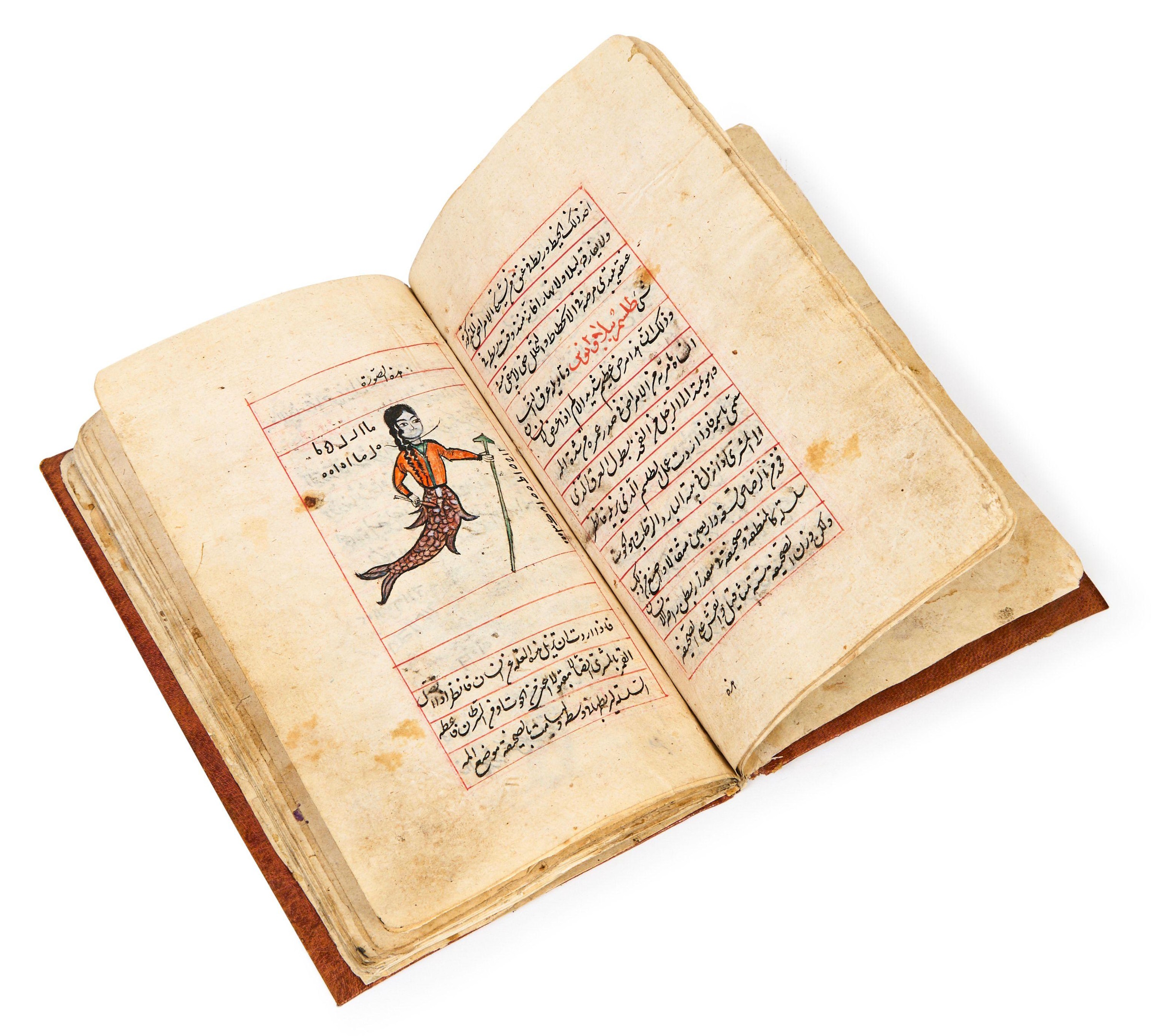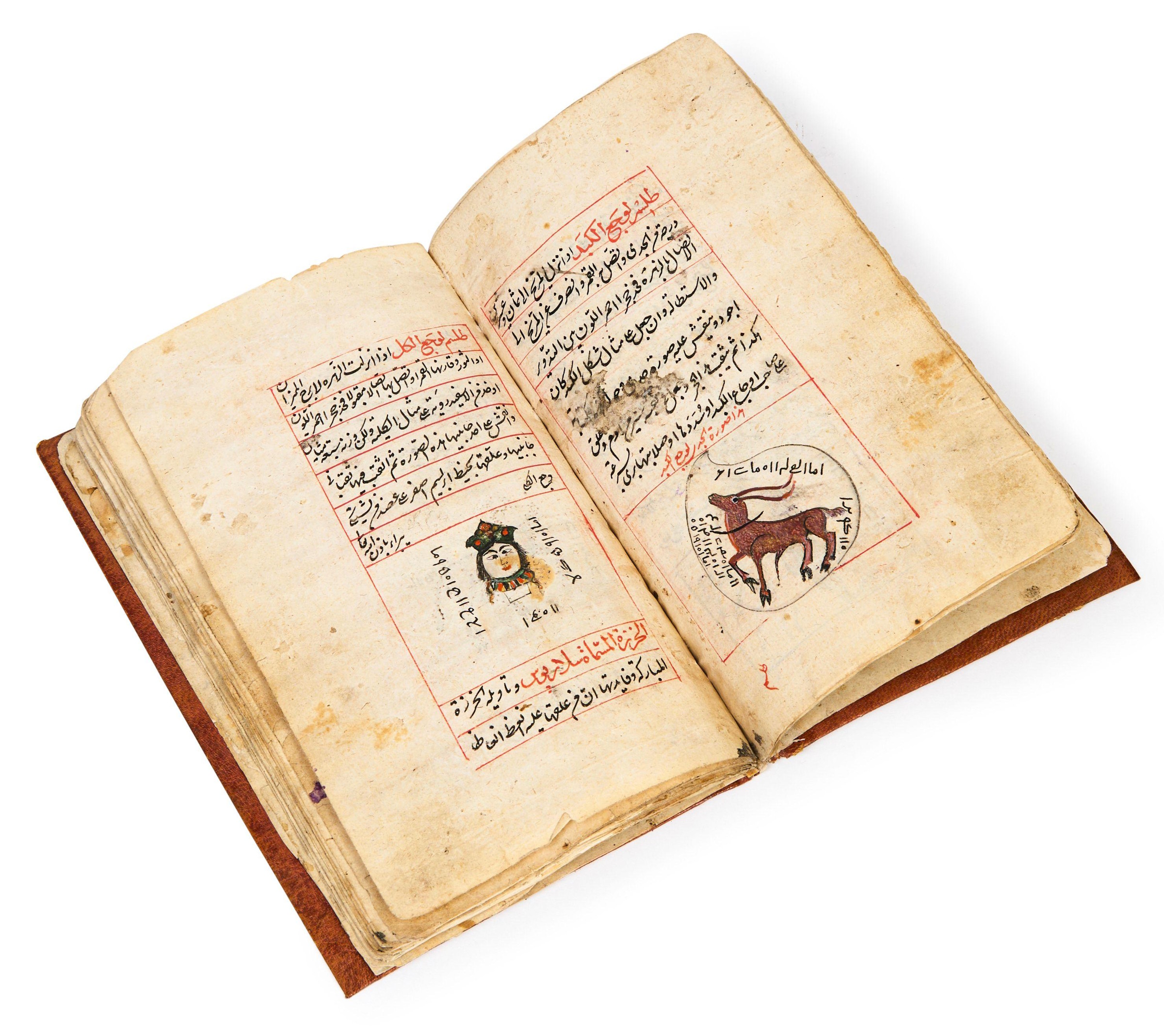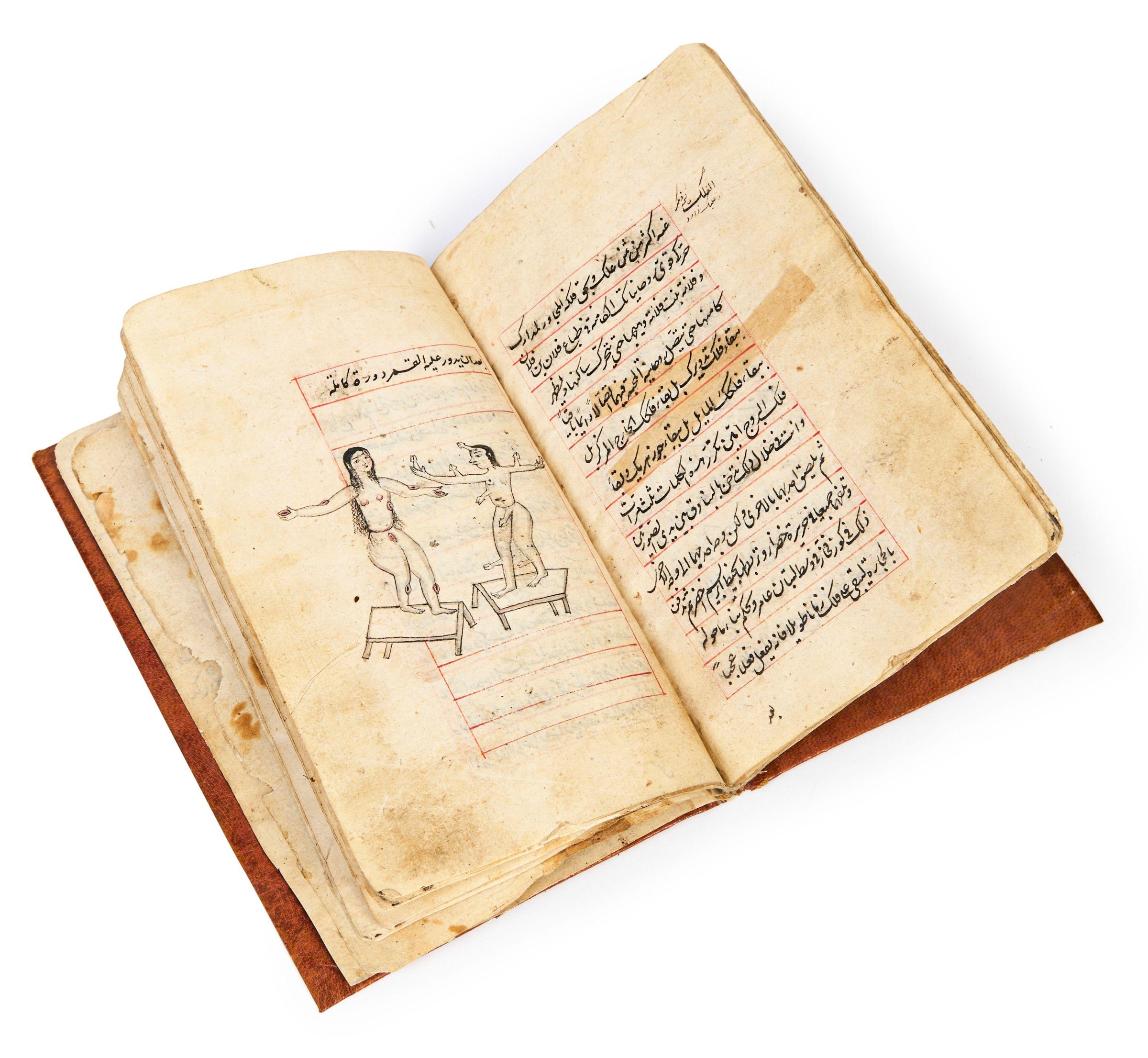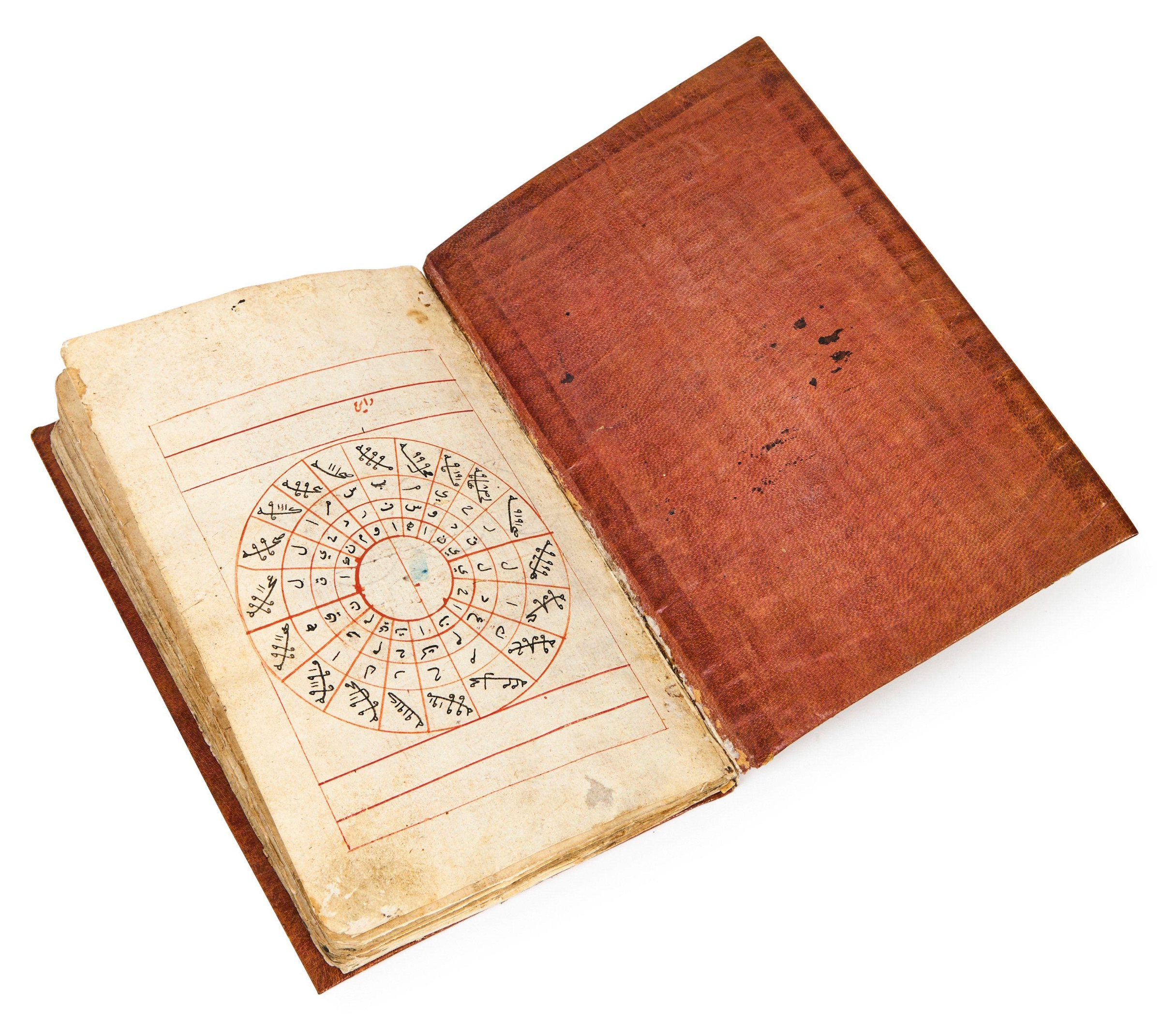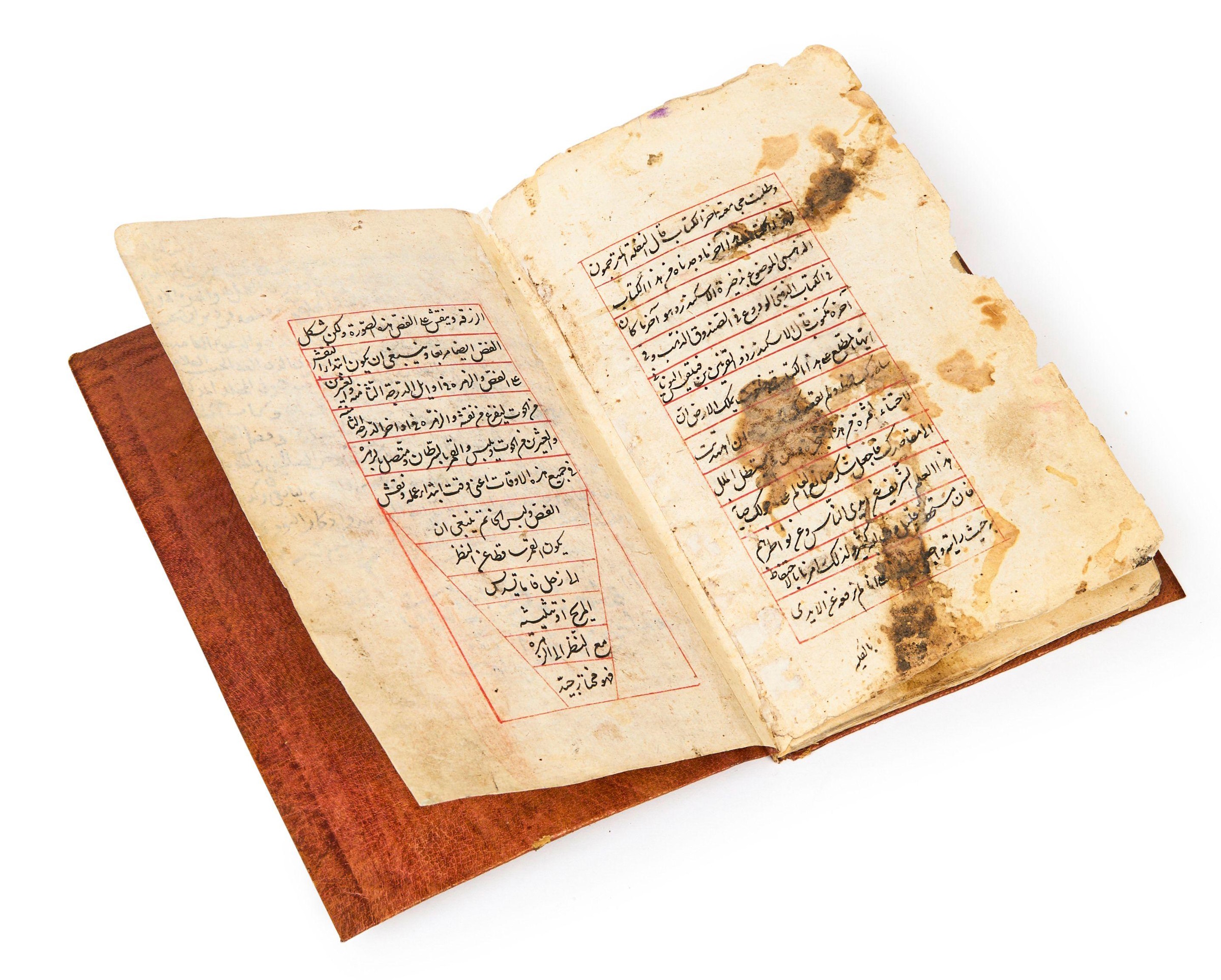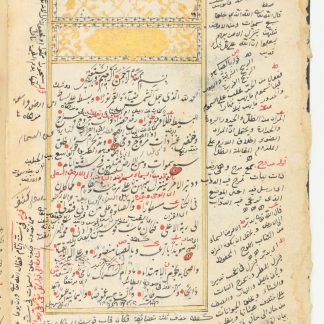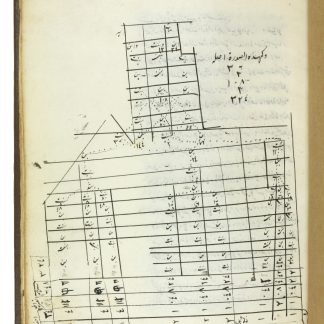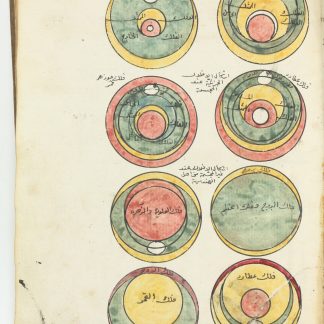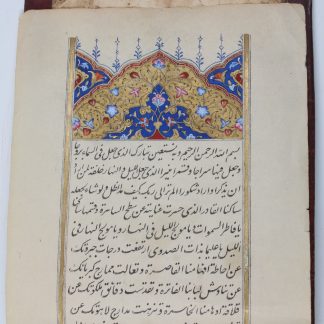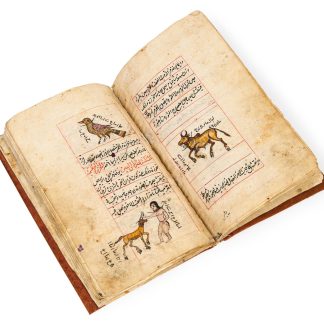An early Islamic manuscript on the zodiac with fine miniatures
Dhakhirat al-Iskandar al-Malik ibn Filiqs Dhi al-Qarnayn.
8vo (120 x 185 mm). Arabic manuscript on polished laid paper. 65 pp. 12 lines of black and occasional red naskh, every line enclosed within red rules, occasional glosses in the margins. With a diagram of the zodiac and 18 colored illustrations in the text (one nearly full-page). Contemporary limp full brown calf, edges reinforced with similar leather.
€ 14,000.00
A thoroughly illustrated astrological and talismanic manuscript attributed by legend to Aristotle and supposedly written for his student, Alexander the Great. It was said to have been translated into Arabic at the request of the Caliph al-Mu'tasim, and comprises eight chapters on esoteric knowledge.
Columbia University holds another copy of this work dated to the same period; the text and illustrations here vary slightly from the Columbia manuscript. Additionally, this copy's illustrations are strikingly hand-coloured, and most depict the Western zodiac in its Muslim form. Included in these illustrations are birds, bulls, and snakes; one shows a female rider astride the Capricorn sea-goat, another a woman with a scorpion's tail, and the final and strangest illustration depicts a man and woman each covered in phalluses and vulvas, respectively, making for a lively and eclectic visual experience.
The manuscript copy begins with last part of the third chapter of the work, "On the composition of poisons", and continues through the tenth and final chapter, "On the properties of animals". Subjects covered include how to make talismanic charms against diseases, the making of antidotes, the order of the planets, and the properties of plants and herbs.
Some browning and staining throughout; some leaves a little frayed, but generally well preserved.


